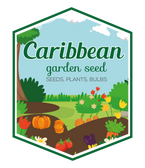
Honeysuckle - Major Wheeler ,
FAST & FREE SHIPPING
Over 90% of our orders are processed and ship out by next business day.
We are currently processing and shipping most orders within 1-3 business days. (backorders not included) Due to high demand during the peak months of January to May, orders may require additional time for packaging /shipment.
Free shipping for orders over $54.95. Excludes live plants, fresh products And Stackable Black Plastic Nursery Crate
Shipping and handling charges will cover outbound freight and packaging materials. Fees are applicable to all orders, based on total order value pre-tax. Expedited services can be selected at Checkout with extra fees.
- Free shipping to lower 48 states on orders $54.95+
- (Most Items), excluding live plants, plant bulbs, and black plastic nursery crate.
- Safe Seed Pledge
- Satisfaction Guaranteed
- Select your desired size and/or color from the available options.
Halls Japanese Honeysuckle - 2.5 ' POT LIVE Starter Plant, Perennial Vine
An outstanding mountain vine with fragrant yellow flowers that loves blooming in the summer heat. Wind, drought, deer, Javelina are no problem. Ideal at growing up fences, walls, or as a groundcover. An excellent solution for a fast-growing screen, even in the poorest of soil. Summer is the preferred planting time for this heat lover.
Japanese honeysuckle is a climber that twines thickly around any vertical structure like a trellis, even the base of trees. The vines bear fragrant butter flowers, dipped in pink, attracting butterflies and hummingbirds from late spring into fall. The flowers gradually fade to yellow, and it is not uncommon to see white, pink, and yellow colors all at the same time. The flowers often produce blackberries that are mildly poisonous to humans. The vine is commonly planted because it does well in shady locations and in crusty dry soils.
Botanical Name – Lonicera japonica
Common Name – Japanese honeysuckle, golden-and-silver honeysuckle
Plant Type – Perennial flowering vine
Mature size – 15 to 20 feet in length, with a spread of 3 to 6 feet
Sun Exposure – Full sun to part shade
Soil Type – Prefers average, well-drained soil
Bloom Time – Late spring to fall
Flower Color – White, maturing to yellow
Hardiness Zones – 4 to 9
Native Areas – Eastern Asia including China, Japan, and Korea
How to Grow Japanese Honeysuckle
Although Japanese honeysuckle prefers moist, loamy soils, these ideal conditions can cause the plant to grow too vigorously. It does well in dry conditions, which help check its rampant growth. Plant it in full sun to part shade; shadier locations will both reduce the amount of flowering and also inhibit the plant’s growth.
Only one plant is needed per post or trellis. Arches should have a plant on each side of the arch. Fencelines and step embankments should be planted at 8′ foot centers, closer for really fast coverage. When planted as a ground cover, use two or three plants for each square yard of ground. Ground cover plants should be sheared back with a lawnmower or hedger in later winter to control growth and remove any dead undergrowth.
Light
This is an adaptable plant that does well in full sun to part shade. A shadier location helps keep its growth under control.
Soil
Japanese honeysuckle does well in average soil that drains well. Dryer soils limit the rampant growth of the vine that adapts well to heavy mountain soils.
For best growth, keep Japanese honeysuckle well-watered (one inch per week) and protect the soil with a layer of Watters Premium Mulch. If the plant becomes too dry, leaves yellow and turn brown, then fall off, though the vine itself rarely dies. Withholding water is a good way to limit the growth of this vine each in summer.
Temperature and Humidity
Japanese honeysuckle thrives in diverse conditions throughout its hardiness zone range. It is deciduous during cold winters, and evergreen through milder winters, but always extremely vigorous.
Feed with Watters 7-4-4 All Purpose Food 3 times per year (March, July, and October) for best blooms and dense foliage that screens and cuts the wind.
Select your desired size and color from the available option
HOW TO GROW GUIDE
LET OUR CUSTOMER SPEAK FOR US

![[Seeds] - Caribbeangardenseed](http://caribbeangardenseed.com/cdn/shop/files/gift-card-gift-card-1_1024x1024_dfa857db-9150-4315-a362-7f0bb3fb9c47_60x28.png?v=1722895789)







